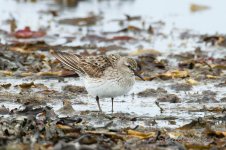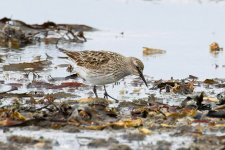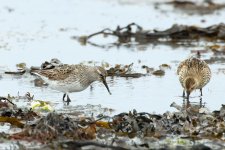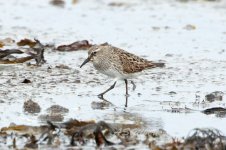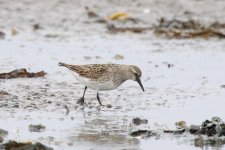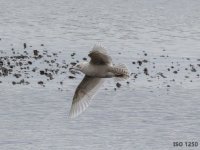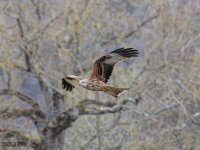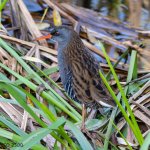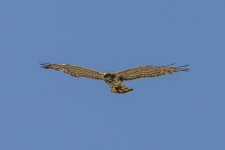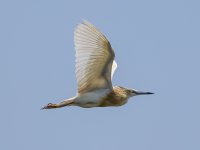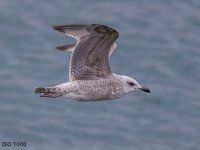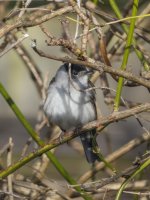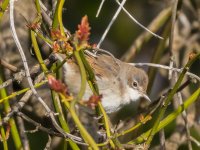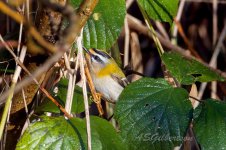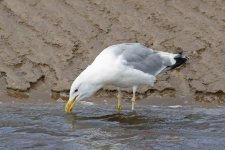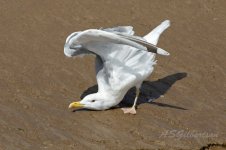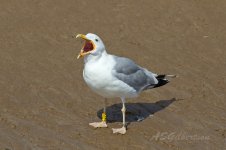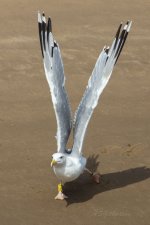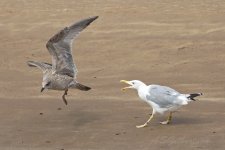I've replaced the Canon 100-400 l with the Canon 100-400 ll. At the same time I've replaced the body from a 80d to a 7d. I really liked the versatility and weight of the older model. I like the faster focus on the newer model. After a year and a half I'm finding the 'new' set starting to feel a bit heavy and I'm sometimes not even bothering to take the camera out. Is there any combination with similar performance that is significantly lighter?
-
Welcome to BirdForum, the internet's largest birding community with thousands of members from all over the world. The forums are dedicated to wild birds, birding, binoculars and equipment and all that goes with it.
Please register for an account to take part in the discussions in the forum, post your pictures in the gallery and more.
You are using an out of date browser. It may not display this or other websites correctly.
You should upgrade or use an alternative browser.
You should upgrade or use an alternative browser.
Lighter alternative to 100-400 II (1 Viewer)
- Thread starter GMS
- Start date
More options
Who Replied?SimonG4ELI
Well-known member

I moved from 7D Mk I with 400mm f5.6 to R7 with rf100-400 - not heavy and a greater performer.
Owen Krout
Well-known member

I had the same issue after putting about 5 years on my 7D mkII and in the process getting 5 years older. I was using a Sigma 150-600mm Contempory, which is even heavier than the Canon 100-400mm, and I started debating whether it was a good idea to bring the camera along. I switched to a Canon EF300mm ƒ4L IS USM +1.4x III extender. You lose the zoom, which I occasionally miss, but it is a much more compact and lightweight rig. I find it at least as sharp and quicker to focus, plus you don't need an oversize camera bag.
As usual the main factor is... price!
Both together are lighter than my EF 400mm 5.6 L with its collar, without the body! this was the "lightest" serious tele lens a few years ago!
They are also 40% cheaper than the 7D and the 400 mm or 100-400 mm I-II L when they came out!
Of course you lose a full stop compared to these lenses, and the build quality is not the same, birding is mostly done in places with dust, weather surprises, tiny bugs, etc that might be an issue.
If you are not limited by money, the R5 to get both the IQ and reach, by cropping... and the RF 100-500 - for the weight of the 400 5.6L but twice the price - would be a better option, although a bit heavier.
Or wait with your 7D for more than 10 years like me, dreaming of the perfect AND affordable gear to come out! I'd bet something like the R5 + 100-500is coming for the price and weight of the R7 + 100-400... in the 10 next years!
The R7 with RF 100-400mm might be the best light weight/performance ratio rigth now?I moved from 7D Mk I with 400mm f5.6 to R7 with rf100-400 - not heavy and a greater performer.
Both together are lighter than my EF 400mm 5.6 L with its collar, without the body! this was the "lightest" serious tele lens a few years ago!
They are also 40% cheaper than the 7D and the 400 mm or 100-400 mm I-II L when they came out!
Of course you lose a full stop compared to these lenses, and the build quality is not the same, birding is mostly done in places with dust, weather surprises, tiny bugs, etc that might be an issue.
If you are not limited by money, the R5 to get both the IQ and reach, by cropping... and the RF 100-500 - for the weight of the 400 5.6L but twice the price - would be a better option, although a bit heavier.
Or wait with your 7D for more than 10 years like me, dreaming of the perfect AND affordable gear to come out! I'd bet something like the R5 + 100-500is coming for the price and weight of the R7 + 100-400... in the 10 next years!
I suppose much depends on price and perfection - if you're looking for the latter, then you pay a premium price.
As a casual, very average photographer, also getting on a bit now, the weight issue is also important, especially as I'm primarily a birdwatcher and so carry bins and, often, a scope, too.
So, final decision was the R7 with RF 100-400mm although I also have RF 600 & 800mm all of which I managed to get for little more than the mrrp of the RF100-500mm alone. You sacrifice speed and weather/dust protection but a good protective cover is a lot cheaper than the RF L series, and I also kept my 7d MkII & EF L 400mm f5.6 as a bad weather option anyway.
Should also mention that - for me - the R7 gives very satisfactory results with both EF L 400mm and 300mm
As a casual, very average photographer, also getting on a bit now, the weight issue is also important, especially as I'm primarily a birdwatcher and so carry bins and, often, a scope, too.
So, final decision was the R7 with RF 100-400mm although I also have RF 600 & 800mm all of which I managed to get for little more than the mrrp of the RF100-500mm alone. You sacrifice speed and weather/dust protection but a good protective cover is a lot cheaper than the RF L series, and I also kept my 7d MkII & EF L 400mm f5.6 as a bad weather option anyway.
Should also mention that - for me - the R7 gives very satisfactory results with both EF L 400mm and 300mm
Thanks all, much appreciated. Wondering about the r7 or r10 with the rf 100-400. Main concern is focus speed, birds in flight and also the fact that the weather here in the UK is very often overcast. That said I'm a birder much more than a photographer, I like to take pics but they are certainly not gold standard as it is !
I personally went for the R7 due to the higher frame rate and better tracking, but the R10 is cheaper, of course, and as I've never used it I can't comment with any authority - try Youtube Wild Alaska channel, there's reviews of each on there.
Focus speed seems to fine to me and although I do struggle with fast bif, that's more down to user incompetence! Mirrorless do handle high ISO well, the 32mp sensor does generate quite a bit of noise, but as I said before, it depends on the results you're after and there's always denoise software.
Just by way of illustration, attached example is a photo taken at 400mm f8, 1/200, ISO10000 (not a misprint) on a freezing cold day at Titchwell. As a C-RAW CR3 file, it had to go through camera raw lab in PsP to allow conversion to JPEG but no additional enhancements and I've cropped by about 50%.
Focus speed seems to fine to me and although I do struggle with fast bif, that's more down to user incompetence! Mirrorless do handle high ISO well, the 32mp sensor does generate quite a bit of noise, but as I said before, it depends on the results you're after and there's always denoise software.
Just by way of illustration, attached example is a photo taken at 400mm f8, 1/200, ISO10000 (not a misprint) on a freezing cold day at Titchwell. As a C-RAW CR3 file, it had to go through camera raw lab in PsP to allow conversion to JPEG but no additional enhancements and I've cropped by about 50%.
Attachments
Barred Wobbler
Well-known member
Having used 7Ds, Mks I & II in the past, noise is nothing at all to worry about with the R7. The R7's not up to the standard of my R5 in that respect, but with a crop sensor and being one third of the price, that's hardly surprising. The noise on the R7 is light years better than the noise level on the 7DII, which I only used higher than ISO 800 in extremis.I personally went for the R7 due to the higher frame rate and better tracking, but the R10 is cheaper, of course, and as I've never used it I can't comment with any authority - try Youtube Wild Alaska channel, there's reviews of each on there.
Focus speed seems to fine to me and although I do struggle with fast bif, that's more down to user incompetence! Mirrorless do handle high ISO well, the 32mp sensor does generate quite a bit of noise, but as I said before, it depends on the results you're after and there's always denoise software.
Just by way of illustration, attached example is a photo taken at 400mm f8, 1/200, ISO10000 (not a misprint) on a freezing cold day at Titchwell. As a C-RAW CR3 file, it had to go through camera raw lab in PsP to allow conversion to JPEG but no additional enhancements and I've cropped by about 50%.
These shots were taken two days ago with the R7 on my 100-500 + 1.4x converter, so at F10 aperture under heavy cloud, with spots of rain. ISO was 5,000. No noise reduction applied beyond opening the CR3 file with DxO Pure Raw. I would have gone home disappointed with either of my old 7Ds
Attachments
pdwinter
Paul Winter
I use the R10 with the RF 100-400. The weight and IQ are exactly what I need. No problems with focus speed and the high ISO images produce fine record shots. I use the automatic de-noise in Lightroom if the image looks like it needs it. Images attached - I've put the ISO speed on the UK ones.Thanks all, much appreciated. Wondering about the r7 or r10 with the rf 100-400. Main concern is focus speed, birds in flight and also the fact that the weather here in the UK is very often overcast. That said I'm a birder much more than a photographer, I like to take pics but they are certainly not gold standard as it is !
Attachments
pdwinter
Paul Winter
Can't help you very much there as it's not something I do very often. I have the camera set up for tracking birds inflight (mainly gulls) on C2 and for other stuff including little birds in bushes I have used single shot and spot on C1 as what I'm used to so I haven't used the animal tracking and eye focus much in that scenario. These two were at the back of the garden moving about in the bushes (somewhere in the 15-20m range taken from behind glass). I find the focussing fast enough for what I want.Thanks - nice. How does this setup cope with e.g. warblers flitting round trees/bushes?
Attachments
Barred Wobbler
Well-known member
Eye tracking struggles in certain scenes. Trees and bushes, seaweed covered beaches and even short grass at times. The sensor picks up eyes where there are none, latching on buds, nodes or leaves, etc, etc. This is fairly easily dealt with by having one back button set up for eye detect (in my case it's the AF-ON button, because my thumb lies there naturally as first choice), with another (in my case the * button) set up for spot focus. Then, when the camera decides not to co-operate, I go back to the old-fashioned method of finding the bird with the spot focus. Often, once this is done, the camera usually comes to its senses and finds the eye with the eye detect button. If it doesn't, there's still the fall-back of the spot focus to do the job, just like in the old days, although a disadvantage of both my mirrorless models is that the smallest 'spot' available isn't quite as small as the small spot on the 7D II.Thanks - nice. How does this setup cope with e.g. warblers flitting round trees/bushes?
One important thing to remember is that in these cases, you need to have 'subject tracking' (which is different to eye detect or Servo focus) disabled, otherwise when you press the spot focus button, you get blue squares dancing all over the place as it hunts for the subject to track. This happened to me the other day with those white-rumped sandpiper shots, after I'd enabled subject tracking earlier in the day for a Caspian Gull on bare sand that I'd been photographing. When I pressed the eye detect button, it found the seaweed around the bird instead and at first I couldn't understand why the spot focus was dancing all over the place, until I realised I had the 'subject tracking' enabled (I normally don't use that function, although it has its uses).
When I first ordered my R5 back in 2020 I lived in hope that it would be able to lock onto the eye of a Sardinian Warbler or something like that, skulking about deep in the twigs of a Spanish shrub. Sadly, when I got it, I realised that this Holy Grail was not yet within reach, but it's still a damned sight better at finding focus than my DSLRs ever could be.
Having said that, my R7 found this Firecrest in a Northumberland bush last November (with, admittedly, some difficulty at times, although I managed 7 keepers during the very brief time it was in view). Caspian Gull shots added from this week, using 'subject detect', which never lost the eye, even before I'd focused.
Attachments
Last edited:
I always do a lot of research and it does get tiresome, so in the end I'm used to Canon, never had any problems, and the mirrorless are backwards compatible with all my EF L lens (with the adapter) which I like and don't want/can't really afford to replace, although I'm sure someone will point out that native RF lenses work better, especially the 100-500 but the cheapest I can find is £2.5K....
Re ef lens performance, I've so far used the 400 f5.6L and 100-400L mkII on the R7 and they work fine, as does the 300mm f4L (which, however, for some reason that is way beyond me, doesn't adapt well on the R6...)
But back to the original post, you're looking to lessen the load, and so the R7/R10 with RF 100-400 gives great results. Just had a quick look online at the supplier I use, and you're looking at £1489 for the R10 setup and £1878 for the R7 both with adapters.
As an aside, another big advantage of mirrorless for me is that the histogram can be displayed in the evf which has both improved my photography - albeit only from average to average + - and keeper rate. I don't know about the other brands but would imagine they're the same.
Best of luck, mate
Re ef lens performance, I've so far used the 400 f5.6L and 100-400L mkII on the R7 and they work fine, as does the 300mm f4L (which, however, for some reason that is way beyond me, doesn't adapt well on the R6...)
But back to the original post, you're looking to lessen the load, and so the R7/R10 with RF 100-400 gives great results. Just had a quick look online at the supplier I use, and you're looking at £1489 for the R10 setup and £1878 for the R7 both with adapters.
As an aside, another big advantage of mirrorless for me is that the histogram can be displayed in the evf which has both improved my photography - albeit only from average to average + - and keeper rate. I don't know about the other brands but would imagine they're the same.
Best of luck, mate
Dave Williams
Well-known member
Panamoz have the 100-500 at £2170 and it comes with a 3 year warranty. Totally reliable company with excellent service.
paddyluke
Well-known member

i purchased a Sony A1 camera from Panamoz yesterday, around £6000 in UK, £4200 with Panamoz, i've bought 2 other cameras from Panamoz and sold them for more than i paid for them.Panamoz have the 100-500 at £2170 and it comes with a 3 year warranty. Totally reliable company with excellent service.
Dave Williams
Well-known member
I have seen some excellent results with this set up. Hope it works out well for you.

Please tell us how you get along with the system! I am considering switching my old camera to this one (or to the Panasonic G9-II that will be announced soon) and keep my Pana 100-400 lens.Have now gone for the Om-1 with panaleica 100-400 with decision made on reasonable (expected) results as a birding set-up and mostly weight. Would have liked to go with R7 and RF 100-400 but deal breaker was the (non existing) wetherseal for the lens.
Niels
Users who are viewing this thread
Total: 2 (members: 0, guests: 2)




